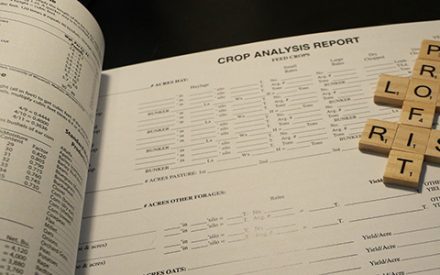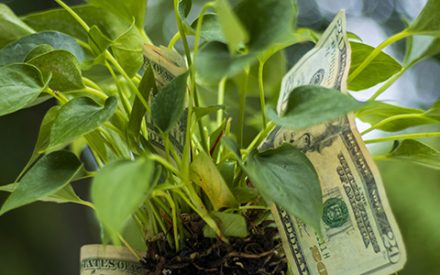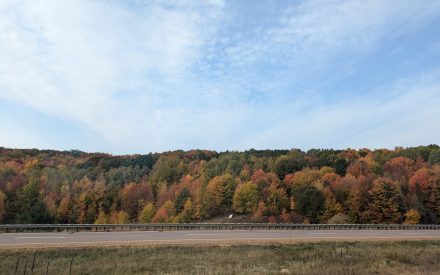Video Summary
In this video, Josh Bendorf from the Wisconsin State Climatology Office presents a comprehensive recap of the 2025 growing season and a fall weather outlook. He reviews temperature and precipitation trends from winter through July, highlighting key weather events, drought conditions, and their impact on crop progress.
Josh discusses soil moisture levels, growing degree day accumulation, and crop conditions across the state. He also provides short- and long-term forecasts for precipitation and temperature, including 7-day, 14-day, and seasonal outlooks. The presentation offers valuable insights for farmers, agronomists, and conservation professionals preparing for late summer and fall.
Resources
- Wisconsin Ag Weather Outlooks
- Wisconsin State Climatology Office
- Wisconet station locations
- Wisconsin Crop Progress and Condition Report from USDA (NASS)
- Crop Conditions & Soil Moisture Analytics (NASS)
- Runoff Risk Advisory Forecast (WI-DATCP)
- NWS Milwaukee Freeze Risk Tool
Transcript
0:05
All right.
0:05
Thank you so much, Liz and good afternoon, everyone.
0:08
Like Liz said, my name is Josh Bendorf.
0:09
I work for the Wisconsin State Climatology office and usually on these Badger Crop Connect webinars.
0:14
I give a quick update.
0:16
That’s a pared down version of our larger Ag Weather Outlook, which will be going out this week, should be going out later today or tomorrow.
0:24
But today I’m going to be giving a little bit more of a, of a of a recap of what we’ve seen so far this growing season, going over some highlights or low lights depending on how you want to look at them from our past Ag Weather Outlook.
0:36
So what have we been dealing with so far this year?
0:40
So I wanna turn back the clock just a little bit to what we were coming into leading up to the growing season.
0:47
So the winter 2020, 2024-2025 temperature and precipitation rankings by climate division.
0:55
So NOAA puts out these rankings comparing our current year to what we have seen over the past, in this case, 130 years of climate records here in Wisconsin.
1:05
And so, what we see here is that our winter, this past winter was warmer and drier than average.
1:12
So across the state, we are about two to three degrees above normal across climate divisions, more so as you went further north in the state.
1:20
And then it was a fairly dry winter as well, especially in the southern part of Wisconsin.
1:25
It was actually a top 10 driest winter across our 3 southern climate divisions with two inches or more precipitation below normal.
1:34
But then we kind of flip things going into March and April.
1:37
March and April was a very wet 2 month period.
1:40
It was the top 10 wettest March and April across some of the central and northern climate divisions, anywhere from about two to four inches above normal.
1:49
But it was.
1:50
But like the rest of winter, early spring was warm.
1:54
We were about 3 to 5° above normal across climate divisions with our 24th warmest March and April period
2:01
on record.
2:04
So looking at drought as we were heading into planting from late February up through roughly the beginning of planting end of April, early May.
2:11
So a lot of this is carry over from what we were coming out of back in the fall.
2:17
Winter is typically our driest time of the year.
2:19
So we don’t have a lot if we have drought coming in from the fall into winter, we don’t usually make a huge dent in that during the winter months.
2:28
So in February, a lot of this was carry over from some dryness in the fall as well as that dry winter that we had.
2:35
But we can see how that was slowly eroded away some.
2:38
By the end of March, we had kind of, we’d added a little bit of D1 drought, but we had eaten away at some of that D1 and D0 in the eastern part of the state.
2:49
And then by the end of April, thanks to those rainfalls that we had, we had pretty much eliminated drought in the state by the end of April.
2:56
Excuse me, just with a little bit down in the southwest part of the state.
3:04
So heading into the growing season, planting was kind of getting going around the late April, early May and some notables from the month of May is that temperatures were getting into the upper 70s and low 80s to start May.
3:18
We had some instances of days that were 15 to 20° above average.
3:23
So very warm end of April transition into the first days of May.
3:28
But along with this, we had little to no precipitation in the north during the first half of the month.
3:33
As you can see on that upper figure where we had looking at the 1st 12 days of May, roughly 10 to 11 of those days had no precipitation.
3:42
So maybe only one day with rainfall during like the first roughly 2 weeks of the month and really across the whole state it was pretty dry.
3:50
So with temperatures getting warmer and soils warming up and with things the field conditions being very dry or fairly dry, that planting was able to make rapid progress during this time as farmers were able to get planting done in a very timely manner.
4:06
We had D1 drought expanding to the east along the Illinois border.
4:10
So things kind of as things were drier, that area of drought went from just being along the Illinois border in the southwest over further to the east.
4:20
May 15th, we had some severe storms.
4:23
There were some tornadoes in Dodge County and some substantial damage around the Juneau and Mayville areas.
4:29
From those storms.
4:32
We had our first 90° high temperatures of 2025 that were recorded and we had a little bit of a lag and growing degree day accumulation towards the end of the month following what was a cool end of the month and also a little bit more of a rainier end to the month.
4:46
You know the first half of the month was fairly dry.
4:49
We had a little bit, we had some more precipitation events during the second-half of the month and you can see the figure down there, the lower figure which shows average temperature departures being well below average for the latter part of May.
5:03
Climate rankings for May, things are pretty average temperature wise, near normal temperatures across climate divisions.
5:10
And then more dryness like I said, in the north where we had the first half of the month was very dry.
5:17
It was a top 10 driest May across the north central and northeast climate divisions with kind of below average across the board, 2 inches or more below normal in that northern part of the state.
5:27
So kind of a flip flop between being dry to wet to dry, May climate, May crop progress, excuse me, corn and soybean progress
5:36
by the end of the month. Both corn and soybean planting in emergence were they were making big jumps in progress from week to week running ahead of normal pace by month’s end.
5:46
So we can see here both corn and soybeans are running ahead of the five year average for emergence by the end of May and both plants were nearing planting completion by this time which they are roughly about 80% planted by the end of May.
6:01
Some notables for the month of June.
6:02
So from that dryness we had in the northern part of the state coming out of the end of May, D0 or abnormal dryness, which is how the USDA US Drought Monitor categorizes abnormal dryness.
6:14
That area expanded in the north and early June and with those cooler temperatures that we had in late May and early June, we had a growing degree day lag.
6:24
You can see the figure there on the top.
6:27
Those areas in blue are in Wisconsin are areas that were 20 to roughly 20 to 40 growing degree days behind normal accumulation, what we would expect things to be at in early June and that slowed down crop progress.
6:42
We had a lot of rainy days in June, June days where we had measurable precipitation, in some cases 18 or more days in parts of western and northern Wisconsin that had measurable precipitation during the month of June.
6:54
The heat cranked up in the second-half of the month.
6:57
We had multiple days reaching 90° across the state.
7:01
We had some very warm nights too, nights that were above 70°.
7:04
So very warm and humid conditions during the second-half of the month.
7:07
And you can see the lower figure there that shows the average departure from temperature departure from average for the second-half of the month.
7:16
And we had some drought improvements in the south in late June thanks to some higher precipitation totals in the month of June.
7:23
June rankings warmer and wetter.
7:26
We had about 3 to 5° above normal across climate divisions, more so in the south and then wetter than normal and June for most with one to two degree, one to two inches above normal.
7:38
Crop progress emergence was all but complete by the end of June, things running very close to average.
7:45
Soybean blooming was being reported in Wisconsin roughly about 3% complete, which is normal for late June.
7:51
And for our dairy forage folks, the first cutting of alfalfa was around 90% complete with the second cutting at about 10% complete.
8:01
So now let’s look at the past 30 days, June 22nd, leading up to roughly current day.
8:07
Average temperatures for the past month range from mid 70s in the south and the west to mid to upper 60s in the north.
8:16
And this is above for most folks
8:18
this was an above normal 30 day period.
8:22
Above normal by at at least 2° for most of Wisconsin, 2 to 4° above normal in the south.
8:28
Those areas, each they’re showing up in red, were 3° or more above normal and nearer to normal in the far north.
8:37
Looking now at precipitation over the past 30 days, the majority of Wisconsin is at or above normal precip since June 22nd.
8:45
You see most of the state there on the figure on the right showing up in green, blue and purple.
8:49
Those are areas that are above normal precipitation with totals of five inches or more for most, the most precipitate.
8:56
The area of the state with the most precipitation over the past 30 days has been kind of the west, southwest part of the state.
9:02
Highest totals in this area we’re over 8 inches, which is 150% or more of normal.
9:08
So much wetter than average for these folks and nearer to normal and pockets of the northwest and in and around Milwaukee, but no major precip deficits during this time.
9:20
But looking back to what we’ve received so far since the beginning of the year, even with those wetter days that we had in June and some timely rainfalls here in the month of July, we’re still behind where we would usually be by July 21st.
9:34
You see those areas in southern Wisconsin and some going up into the west central and northwest parts of the state that are still lagging behind normal totals for this time of year.
9:47
But overall soil moisture is doing quite well above normal soil moisture levels.
9:51
Are those areas there in the map that are showing up in blue
9:54
this is modeled soil moisture in the top meter of soil.
9:58
Those are areas that are indicated as above normal soil moisture level, so higher than we would expect for this time of year.
10:06
Those are widespread across the north, central and southwest parts of the state and NASS right now is reporting that soil moisture levels and topsoil and subsoil are right around 75% adequate.
10:19
So doing pretty good there.
10:21
As we get more over kind of into Liz’s area, the southeast part of the state, these areas are near to slightly below normal where precipitation over the past 30 days has been a little bit less than other parts of the state.
10:35
We have right now NASS is reporting a roughly around 9% of fields in the state are have short to very short topsoil moisture which is unchanged from last week.
10:47
Looking at soil moisture, measured soil moisture across Wisconet stations that we have located at UW’s various research farms, looking at the current data, how that compares to last week and one month ago.
10:58
We can see levels compared to last week are pretty much the same, some, some small gains and small losses.
11:06
What we see at some of our southern stations such as the Dairy Forage, ARS site, Lancaster, and the turfgrass site in Verona, we’ve had, we have, we’ve had some big gains in soil moisture since the beginning or since the middle of June where things were a little bit drier back then.
11:22
As we’ve gotten more timely rainfalls over that time, those soil moisture levels have been able to come up.
11:29
And looking at our drought time series as of today, the drought, the new drought monitor just released, we are now drought free in the state.
11:36
Last week we had a small bit of southeast Wisconsin that was remaining in D1 drought.
11:41
But thanks to those rains that those continued rains that we’ve gotten over the past month or so, drought has been eliminated in the state.
11:49
And this is the first time that the drought that the state has been drought free since September 10th of last year.
11:55
This is also the last time that D0 or abnormal dryness coverage in the state was below 1% since about exactly 1 year ago.
12:05
Looking at latest crop progress maps, percent silking for corn is roughly around 30% complete, which is near to the average, maybe just a little bit behind where we would expect things to be for late July.
12:17
And then soybean blooming is now over half done at 59% complete, right at normal pace for late July.
12:24
We also have some pod setting that is being reported in soybean fields.
12:28
Right now
12:28
tt’s running at 17% complete.
12:33
Crop condition things are pretty good.
12:35
We had slight gains in crop condition from last week.
12:38
We’re running at about 75 to 80% good to excellent right now.
12:43
And so looking ahead now to the next seven days, this is the forecast for precip from July 24th through the 31st.
12:51
We see again we have another another pretty active week for precipitation that’s on tap.
12:56
Our normal for this time of year is about .9 inches.
12:59
And right now if this forecast verifies most folks in the state would be above, above average for the for this week.
13:07
But be sure to check your local forecast for more details on totals and timing and thing remember that things can change day-to-day with our forecasts.
13:15
But right now we’re looking at precip chances on most days through next week Tuesday for at least some part of the state of Wisconsin.
13:23
And then our our highest chances of precip are kind of more so on the eastern side of the state compared to the west.
13:32
Looking ahead one to two weeks out now as we transition into the first part of August, temperatures right now are leaning towards below normal for pretty much all of Wisconsin.
13:43
I’m a little bit less or so for those of you in the far northwest part of the state, but kind of 40 to 50% odds right now that temperatures are going to be below average for this time.
13:51
So not, not a slam dunk by any means, but there’s a little bit of an indication that things will be cooler than average for the first couple days of August.
14:00
And then and precipitation right now is leaning right about normal and our normals for this time period are about average temperatures of 68 and precip about .8 inches.
14:12
Looking ahead to the month of August, these outlooks were released on July 17th.
14:17
They’re, they’re about a week old at this point and there’ll be new outlooks that will be coming out probably one week from today.
14:24
But right now our current outlooks are that temperatures are going to be leaning slightly towards above normal for most of the state of Wisconsin.
14:32
And we are uncertain right now for precipitation with equal chances for above, near or below normal.
14:38
And our normals for the month of August are temperatures, average temperatures of 67° and and about 4.24 inches of precipitation.
14:50
Looking ahead to the rest of summer through the first part of fall, temperatures are leaning towards above normal for Wisconsin, a little bit stronger lean towards above normal temperatures, precipitation being uncertain more in the southern and eastern parts of the state with a slight lean towards below normal for further north and west.
15:11
So not a strong indication by any means right now and our US seasonal drought outlook, so this is mostly looking at do we have any chances for extended dry periods during this time, this July 17th through October 31st.
15:28
Right now, there’s no indication that there’s going to be drought development likely in Wisconsin and maybe some drought improvements or removal down in the far southern part of the state.
15:39
So right now no strong indications there, but just a reminder, you know like I said with our outlooks, things are a little bit uncertain with precip right now.
15:47
So if we were to go, you know a week plus without getting any rainfall, we evapotranspiration is still high this time of year, you know, things could get dry, you know, if we were to go like a week or so without precip.
15:59
So just some just something to keep an eye on.
16:01
But right now, no indications that we’re going to have drought added in Wisconsin in late summer into the first part of fall.
16:12
So with that, that’s all I have.
16:14
And if you have any time for questions, I’ll be happy to take those.
Badger Crop Connect
Timely Crop Updates for Wisconsin
Second and fourth Thursdays 12:30 – 1:30 p.m.
Live via Zoom

 ▶ Fall 2025 Financial Assistance for Producers
▶ Fall 2025 Financial Assistance for Producers ▶ Fall 2025 Ag Policy Update
▶ Fall 2025 Ag Policy Update ▶ Fall 2025 Corn and Soybean Market Outlook
▶ Fall 2025 Corn and Soybean Market Outlook ▶ November 6 Ag Weather Outlook for Wisconsin
▶ November 6 Ag Weather Outlook for Wisconsin


